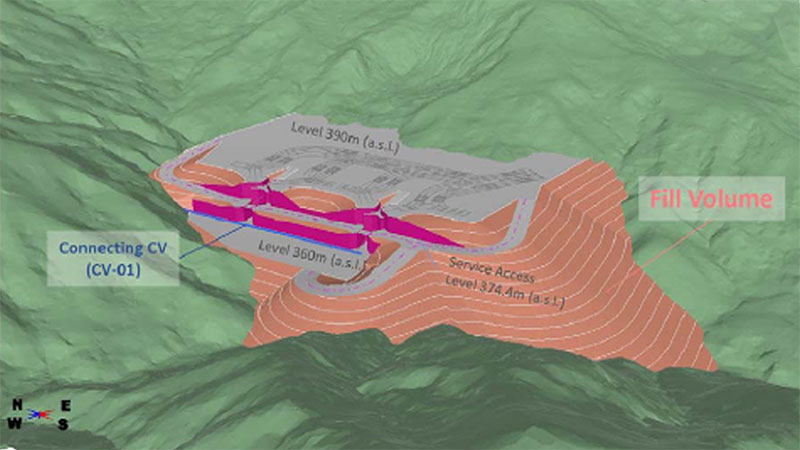This large-scale copper, gold and silver mineral resource is located in a mountainous region in the island of Sumbawa, Indonesia. The project is located approximately 60 km from one of the company’s mature operations, with various scoping studies looking at transporting ore to an expanded bulk handling ore processing plant.
Several methods of ore transportation were considered and/or investigated in various scoping studies over the last few years including (but not limited to) the use of barging (from a new port), trucking, rail, Rail-Veyor®, aerial ropeway, overland conveyor, coarse media slurry pipeline and a pre-flotation slurry pipeline.
For this 2019 feasibility study, the overland conveyor option was adopted. Trimble Quantm Software was employed in order to determine optimal conveyor alignment and reduce the amount of cut and fill volumes.
The envisaged system comprises two semi-mobile crushing plants arranged in parallel with direct truck dump, internal bin, gyratory crusher and discharge conveyor, located in the valley in proximity of the proposed main pit access ramp. Each crushing plant will discharge primary crushed ore material onto a connecting conveyor via a discharge feeder. A connecting conveyor will transport material to a stockpile feed conveyor via a 1.3 km long tunnel, whilst a stockpile feed conveyor will transport material to the top of a gravity buffer stockpile where it will be discharged by a tripper car.
The stockpile was laid out with a total capacity of more than 750,000 t in order to minimize downtime of the overland conveyor system. A variety of belt feeders withdraw material from the buffer stockpile and discharge it onto the stockpile discharge conveyor. The stockpile discharge conveyor then transports material to the overland conveyor system, which, with a total length of 55 km, runs through the mountains and consists of a multitude of elevated structures and tunnels. This system consists of nine individual conveyor flights that transport material to the existing coarse ore stockpile. Each overland conveyor flight, with a design capacity of ~9,500 t/h, will be equipped with a maintenance cart and advanced gearless drive technology. Gearless drives eliminate the need for a gearbox, hereby significantly reducing the number of main wear parts, which results in increased efficiency and reliability, as well as less maintenance being required.
Rico Neumann, Chief Mine Planning Engineer, had this to say, “This large study goes a long way in confirming TMTC’s strong global reputation – that we have the experience and know-how to accurately develop and determine the best economic solution for our clients’ specific project requirements.”
Further information regarding TAKRAF’s range of project study capabilities.

